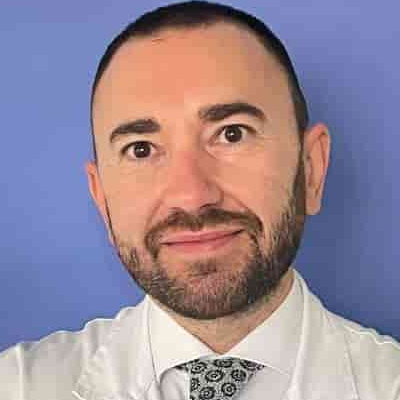Innovation in Head and Neck Reconstructive Surgery
A special issue of Journal of Clinical Medicine (ISSN 2077-0383). This special issue belongs to the section "Otolaryngology".
Deadline for manuscript submissions: closed (31 January 2021) | Viewed by 57292
Special Issue Editors
2. Head of Oral and Maxillo-Facial Surgery Unit, IRCCS Azienda Ospedaliera Universitaria di Bologna, Bologna, Italy
Interests: maxillofacial surgery; head and neck surgery; head and neck oncology; new technologies in medicine; computer-assisted surgery; virtual surgery; CAD/CAM reconstructive surgery; 3D printing in medicine
Special Issues, Collections and Topics in MDPI journals
Interests: CAD/CAM; additive manufacturing; virtual surgical planning; cranio-maxillofacial surgery; innovation
Special Issues, Collections and Topics in MDPI journals
Special Issue Information
Dear Colleagues,
The field of head and neck reconstruction is exceptionally complex. Many of the anatomical structures requiring reconstruction have a crucial role in facial morphology and for functions such as speech, swallowing, and mastication. All these aspects strongly influence the patient’s daily quality of life. The lack of effective reconstruction techniques in the distant past left surgeons and patients with poor outcomes.
Over the past few years, the development of new technologies such as virtual surgical planning and 3D printing have been shown to result in better outcomes in terms of reconstructive accuracy, with good improvement in results as compared to traditional reconstruction techniques. The field of head and neck reconstruction is on the move. In fact, computer-assisted surgery with customized implants is becoming increasingly common for head and neck reconstruction, also associated with revascularized tissue transfer. These techniques allow surgeons to provide increasingly personalized reconstruction, improving the average results and reducing surgical time.
The present Special Issue aims to explore these new frontiers of reconstructive surgery as supported by 3D technology.
We would be honored to have robust contributions from eminent experts on head and neck reconstructive surgery in order to update the scientific literature on this fascinating topic.
Prof. Dr. Achille Tarsitano
Prof. Dr. Florian M. Thieringer
Guest Editors
Manuscript Submission Information
Manuscripts should be submitted online at www.mdpi.com by registering and logging in to this website. Once you are registered, click here to go to the submission form. Manuscripts can be submitted until the deadline. All submissions that pass pre-check are peer-reviewed. Accepted papers will be published continuously in the journal (as soon as accepted) and will be listed together on the special issue website. Research articles, review articles as well as short communications are invited. For planned papers, a title and short abstract (about 100 words) can be sent to the Editorial Office for announcement on this website.
Submitted manuscripts should not have been published previously, nor be under consideration for publication elsewhere (except conference proceedings papers). All manuscripts are thoroughly refereed through a single-blind peer-review process. A guide for authors and other relevant information for submission of manuscripts is available on the Instructions for Authors page. Journal of Clinical Medicine is an international peer-reviewed open access semimonthly journal published by MDPI.
Please visit the Instructions for Authors page before submitting a manuscript. The Article Processing Charge (APC) for publication in this open access journal is 2600 CHF (Swiss Francs). Submitted papers should be well formatted and use good English. Authors may use MDPI's English editing service prior to publication or during author revisions.
Keywords
- reconstructive surgery
- head and neck surgery
- 3D printing
- new technologies
- virtual surgical planning
- computer-assisted surgery
- personalized reconstructive surgery
- augmented reality
- microvascular reconstruction







